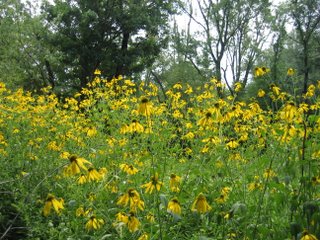 The Garden Club of Princeton took a walk on the wild side this week. In two brisk and sunny morning sessions organized by their Conservation Committee, ten volunteers removed invasive plants from the strip of land between the towpath and the canal, liberating native shrubs and wildflowers from an oppressive tangle of exotic weeds. The radiant fall colors of silky dogwood and winged sumac (in photo), and clear views of the water, can now be enjoyed by the many users of the path.
The Garden Club of Princeton took a walk on the wild side this week. In two brisk and sunny morning sessions organized by their Conservation Committee, ten volunteers removed invasive plants from the strip of land between the towpath and the canal, liberating native shrubs and wildflowers from an oppressive tangle of exotic weeds. The radiant fall colors of silky dogwood and winged sumac (in photo), and clear views of the water, can now be enjoyed by the many users of the path.Wielding loppers, volunteers removed multiflora rose, Chinese privet, purple loosestrife, Japanese honeysuckle and oriental bittersweet. Many native species are competing with the exotics for sunlight, including the above-mentioned shrubs, elderberry, evening primrose, rose mallow Hibiscus, ironweed and the rarely seen blue flag iris. The trimming back of the aggressive exotic species will allow the natives the advantage they need to prosper.
This wild brand of gardening is hard to approach in a perfectionist way. Given its grand scale, neatness is hard to achieve, and weeds are never fully conquered. Rather, one acts strategically, removing the most aggressive weeds, and in so doing shifts the balance of energy towards the desired species. Over time, the natives grow stronger, shade out the weeds, and a dynamic and ornamental border, full of nectar and seeds, makes a visit to the towpath more gratifying for both people and wildlife.
Thanks to Kathleen Biggins and Margaret Sieck, co-chairs of the Conservation Committee, for their initiative, and the help and company of the garden club volunteers as we restored some ecological balance along the canal.
The section of the D&R Canal State Park getting all this attention is located between Washington and Harrison Streets.













